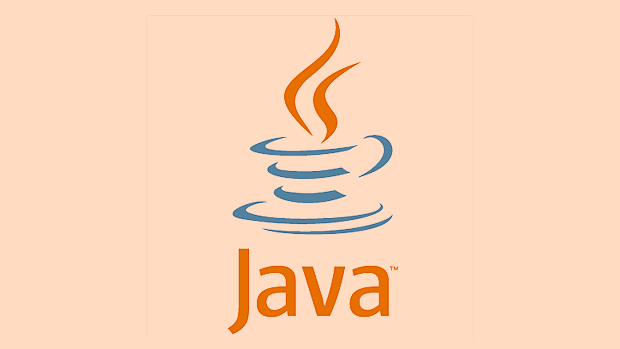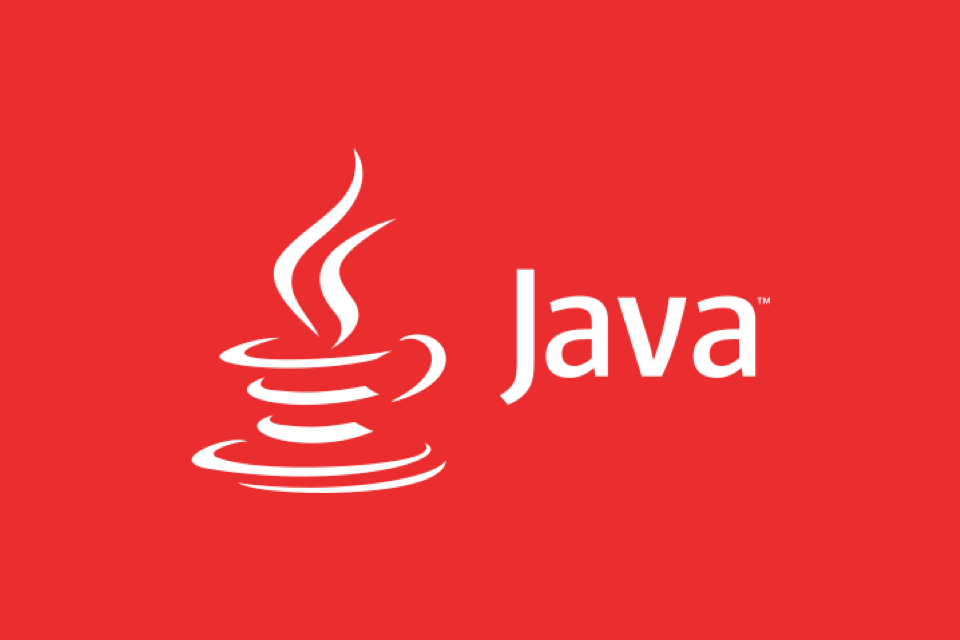Java can be natively compiled through GraalVM's Native Image to get rid of JVM dependencies; 1. Use AOT compilation to convert Java bytecode into a local executable file; 2. Significantly improve the startup speed to milliseconds, reduce memory usage to about 50MB, and realize independent deployment of single files; 3. Install GraalVM and configure native-image tools to generate images through Maven or Spring Boot 3 build-image; 4. Pay attention to explicit registration of features such as reflection and dynamic proxy. Some JNI and dynamic loading are not supported, the construction time is long and debugging is difficult; 5. Suitable for microservices, Serverless and CLI tools, Spring Boot 3 Java 17 is recommended to combine, and the performance improvement is significant but the trade-offs are required.

Java and native mirroring: GraalVM's early compilation method

Many people think that Java can only "rely run on JVM", with slow startup and high memory, and is not suitable for lightweight services or Serverless. But the emergence of GraalVM changed this - it compiles Java programs into native executable files through Ahead-of-Time (AOT, early compilation) technology, completely get rid of the dependence on JVM.
What is GraalVM Native Image?
GraalVM is a high-performance runtime launched by Oracle and supports multilingual (Java, JavaScript, Python, etc.). One of its core features is Native Image , which can compile Java bytecode into local machine code at build time (rather than runtime) to generate a standalone executable file.

This process is AOT compilation. Unlike traditional JIT (Just-In-Time), AOT "solidizes" the code into native binary during the application packaging stage, and no longer requires JVM interpretation or dynamic compilation.
Why use Native Image?
You may ask: Java is already very mature, why do you still have to struggle with native compilation? There are three main practical benefits:

- Extremely fast startup speed : Spring Boot application has dropped from a few seconds to a few tens of milliseconds, which is especially suitable for Serverless, CLI tools and other scenarios.
- Low memory footprint : Without the runtime overhead of JVM, off-heap memory is more controllable, suitable for resource-constrained environments.
- Independent deployment : The generated is a single executable file, which does not rely on external JVM, and is easier to deploy, similar to Go programs.
For example: an ordinary Spring Boot Web service, the startup time is 3 to 5 seconds, and the memory occupies 300MB; and after compiling into Native Image, the startup time can be compressed to less than 0.1 seconds, and the memory is about 50MB.
How to generate a Native Image?
Generating native mirrors is not complicated, but requires some preparation. The following is the basic process:
-
Install GraalVM
- Recommended to use GraalVM Community Edition (open source free)
- Set
JAVA_HOMEto point to GraalVM and make sure thenative-imagetool is available
-
Add build dependencies
- If it is a Maven project, add
nativeprofile support - If you use Spring Boot, it is recommended to cooperate with Spring Native (although it has been integrated into Spring Boot 3 now)
- If it is a Maven project, add
-
Build native mirrors
# Pack JAR first ./mvnw package # Use native-image to compile native-image -jar target/myapp.jar
Or in a more modern way, via Buildpacks or Docker:
./mvnw spring-boot:build-image
Spring Boot 3 supports packaging as
nativeimages by default (native profile needs to be enabled).
Notes and limitations
Although Native Image is very powerful, it is not a "panacea". There are several key points that must be paid attention to:
Reflection, dynamic proxy, and resource loading need to be explicitly configured
AOT compilation cannot predict which classes will be used in reflection at runtime and must be declared via@RegisterForReflectionornative-image.properties.-
Some dynamic features are not supported
-
System.loadLibrary()and JNI calls are restricted - Dynamic class loading (such as
ClassLoader.defineClass) is invalid after compilation - Some third-party libraries (especially those using ASM and CGLIB) may be incompatible
-
The compilation process involves closed-world assumption, which may take several minutes and is not suitable for frequent iterative development.
Debugging difficulty increases. When native mirror crashes, the stack information is not as clear as the JVM. It is recommended to keep the JVM version for debugging.
Practical suggestions
- Suitable for scenarios : microservices, Serverless functions, CLI tools, cold start-sensitive applications
- Not suitable for scenarios : large monoliths, systems that frequently use reflection or dynamic scripts
- Recommended combination : Spring Boot 3 Java 17, which is the most mature native Java combination at present
Basically that's it. GraalVM's Native Image allows Java to "lightly install". Although there are some limitations, the performance leap brought by it is real in the right scenario. Not complicated, but it is easy to ignore details.
The above is the detailed content of Java and GraalVM: Ahead-of-Time Compilation for Native Images. For more information, please follow other related articles on the PHP Chinese website!

Hot AI Tools

Undress AI Tool
Undress images for free

Undresser.AI Undress
AI-powered app for creating realistic nude photos

AI Clothes Remover
Online AI tool for removing clothes from photos.

Clothoff.io
AI clothes remover

Video Face Swap
Swap faces in any video effortlessly with our completely free AI face swap tool!

Hot Article

Hot Tools

Notepad++7.3.1
Easy-to-use and free code editor

SublimeText3 Chinese version
Chinese version, very easy to use

Zend Studio 13.0.1
Powerful PHP integrated development environment

Dreamweaver CS6
Visual web development tools

SublimeText3 Mac version
God-level code editing software (SublimeText3)

Hot Topics
 Differences Between Callable and Runnable in Java
Jul 04, 2025 am 02:50 AM
Differences Between Callable and Runnable in Java
Jul 04, 2025 am 02:50 AM
There are three main differences between Callable and Runnable in Java. First, the callable method can return the result, suitable for tasks that need to return values, such as Callable; while the run() method of Runnable has no return value, suitable for tasks that do not need to return, such as logging. Second, Callable allows to throw checked exceptions to facilitate error transmission; while Runnable must handle exceptions internally. Third, Runnable can be directly passed to Thread or ExecutorService, while Callable can only be submitted to ExecutorService and returns the Future object to
 Asynchronous Programming Techniques in Modern Java
Jul 07, 2025 am 02:24 AM
Asynchronous Programming Techniques in Modern Java
Jul 07, 2025 am 02:24 AM
Java supports asynchronous programming including the use of CompletableFuture, responsive streams (such as ProjectReactor), and virtual threads in Java19. 1.CompletableFuture improves code readability and maintenance through chain calls, and supports task orchestration and exception handling; 2. ProjectReactor provides Mono and Flux types to implement responsive programming, with backpressure mechanism and rich operators; 3. Virtual threads reduce concurrency costs, are suitable for I/O-intensive tasks, and are lighter and easier to expand than traditional platform threads. Each method has applicable scenarios, and appropriate tools should be selected according to your needs and mixed models should be avoided to maintain simplicity
 Understanding Java NIO and Its Advantages
Jul 08, 2025 am 02:55 AM
Understanding Java NIO and Its Advantages
Jul 08, 2025 am 02:55 AM
JavaNIO is a new IOAPI introduced by Java 1.4. 1) is aimed at buffers and channels, 2) contains Buffer, Channel and Selector core components, 3) supports non-blocking mode, and 4) handles concurrent connections more efficiently than traditional IO. Its advantages are reflected in: 1) Non-blocking IO reduces thread overhead, 2) Buffer improves data transmission efficiency, 3) Selector realizes multiplexing, and 4) Memory mapping speeds up file reading and writing. Note when using: 1) The flip/clear operation of the Buffer is easy to be confused, 2) Incomplete data needs to be processed manually without blocking, 3) Selector registration must be canceled in time, 4) NIO is not suitable for all scenarios.
 Best Practices for Using Enums in Java
Jul 07, 2025 am 02:35 AM
Best Practices for Using Enums in Java
Jul 07, 2025 am 02:35 AM
In Java, enums are suitable for representing fixed constant sets. Best practices include: 1. Use enum to represent fixed state or options to improve type safety and readability; 2. Add properties and methods to enums to enhance flexibility, such as defining fields, constructors, helper methods, etc.; 3. Use EnumMap and EnumSet to improve performance and type safety because they are more efficient based on arrays; 4. Avoid abuse of enums, such as dynamic values, frequent changes or complex logic scenarios, which should be replaced by other methods. Correct use of enum can improve code quality and reduce errors, but you need to pay attention to its applicable boundaries.
 How Java ClassLoaders Work Internally
Jul 06, 2025 am 02:53 AM
How Java ClassLoaders Work Internally
Jul 06, 2025 am 02:53 AM
Java's class loading mechanism is implemented through ClassLoader, and its core workflow is divided into three stages: loading, linking and initialization. During the loading phase, ClassLoader dynamically reads the bytecode of the class and creates Class objects; links include verifying the correctness of the class, allocating memory to static variables, and parsing symbol references; initialization performs static code blocks and static variable assignments. Class loading adopts the parent delegation model, and prioritizes the parent class loader to find classes, and try Bootstrap, Extension, and ApplicationClassLoader in turn to ensure that the core class library is safe and avoids duplicate loading. Developers can customize ClassLoader, such as URLClassL
 Exploring Different Synchronization Mechanisms in Java
Jul 04, 2025 am 02:53 AM
Exploring Different Synchronization Mechanisms in Java
Jul 04, 2025 am 02:53 AM
Javaprovidesmultiplesynchronizationtoolsforthreadsafety.1.synchronizedblocksensuremutualexclusionbylockingmethodsorspecificcodesections.2.ReentrantLockoffersadvancedcontrol,includingtryLockandfairnesspolicies.3.Conditionvariablesallowthreadstowaitfor
 Handling Common Java Exceptions Effectively
Jul 05, 2025 am 02:35 AM
Handling Common Java Exceptions Effectively
Jul 05, 2025 am 02:35 AM
The key to Java exception handling is to distinguish between checked and unchecked exceptions and use try-catch, finally and logging reasonably. 1. Checked exceptions such as IOException need to be forced to handle, which is suitable for expected external problems; 2. Unchecked exceptions such as NullPointerException are usually caused by program logic errors and are runtime errors; 3. When catching exceptions, they should be specific and clear to avoid general capture of Exception; 4. It is recommended to use try-with-resources to automatically close resources to reduce manual cleaning of code; 5. In exception handling, detailed information should be recorded in combination with log frameworks to facilitate later
 How does a HashMap work internally in Java?
Jul 15, 2025 am 03:10 AM
How does a HashMap work internally in Java?
Jul 15, 2025 am 03:10 AM
HashMap implements key-value pair storage through hash tables in Java, and its core lies in quickly positioning data locations. 1. First use the hashCode() method of the key to generate a hash value and convert it into an array index through bit operations; 2. Different objects may generate the same hash value, resulting in conflicts. At this time, the node is mounted in the form of a linked list. After JDK8, the linked list is too long (default length 8) and it will be converted to a red and black tree to improve efficiency; 3. When using a custom class as a key, the equals() and hashCode() methods must be rewritten; 4. HashMap dynamically expands capacity. When the number of elements exceeds the capacity and multiplies by the load factor (default 0.75), expand and rehash; 5. HashMap is not thread-safe, and Concu should be used in multithreaded






